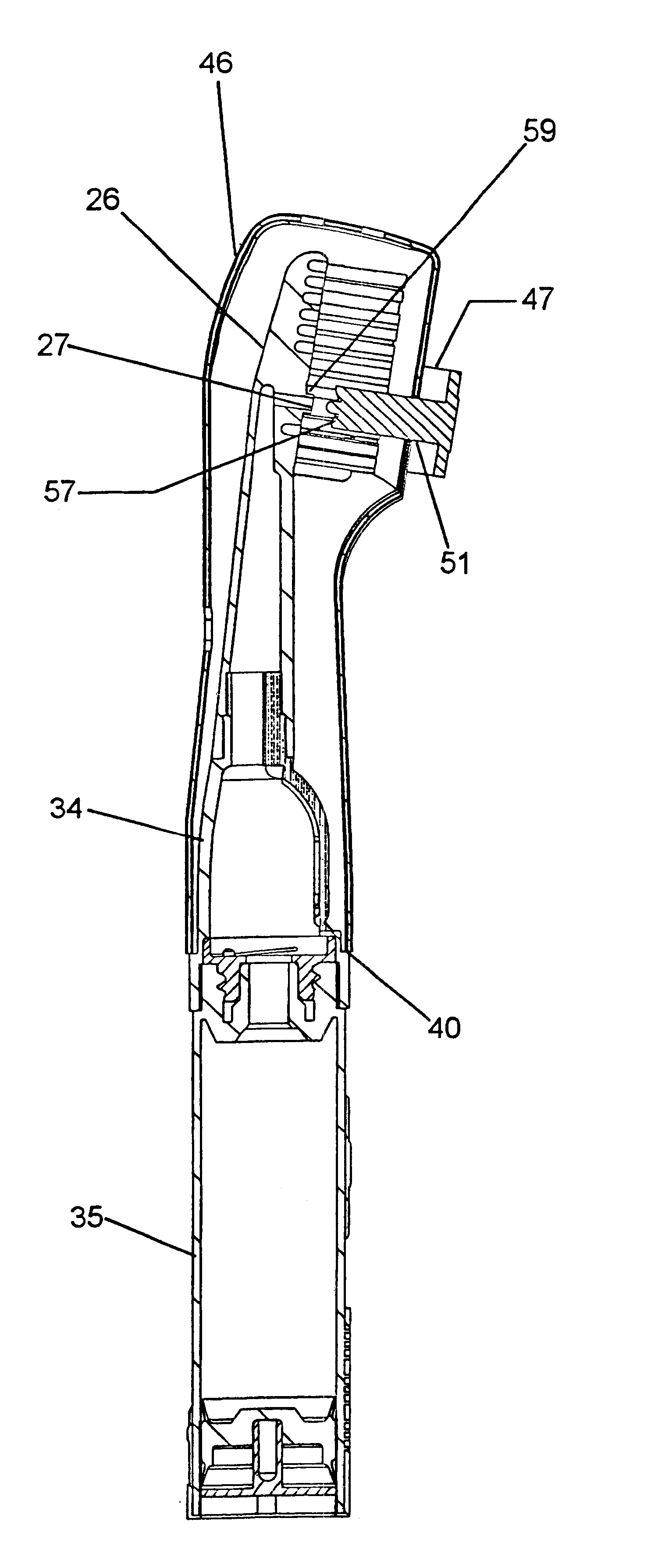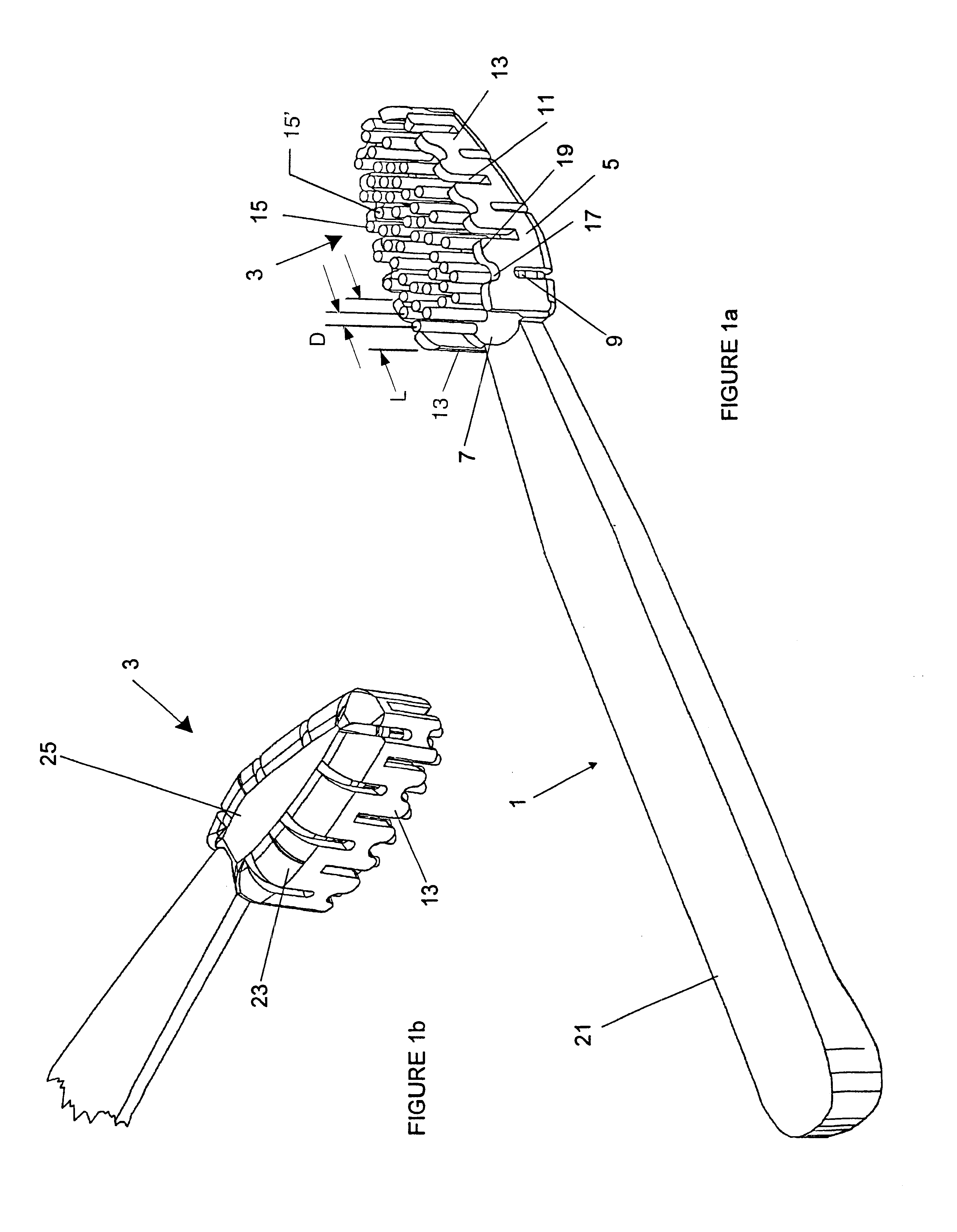Toothbrush for massaging and protecting gums
a technology for teeth and gums, applied in the field of teethbrushes, can solve the problems of gum injury, unpre-warning the user of exceeding a safe brushing pressure, and complex spring loading configuration, and achieve the effect of limiting the brushing angle against the gumline, limiting the deflection and pressure of the bristles
- Summary
- Abstract
- Description
- Claims
- Application Information
AI Technical Summary
Benefits of technology
Problems solved by technology
Method used
Image
Examples
Embodiment Construction
FIGS. 1a, 1b, 1c, 1d, and 1e shows a toothbrush 1 with a brush head 3 and handle 21. Brush head 3 has bristle platform 7 having a peripheral edge 13' that extends from the top surface 7' to the bottom surface 25 and rubber guard 5 attached to the peripheral edge of the bristle platform 7. (The terms, "rubber gum guard", "resilient gum guard", "resilient guard wall", "resilient guard", "rubber guard" and "rubber guard wall" are used interchangeably.) A plurality of outer bristles 15 and inner bristles 15' are attached to the bristle platform. The rubber guard 5 is divided into wall segments 13 by slot openings 11, which provide for the passage of cleaning water and which add to the flexibility of the wall segments. A plurality of saddle valleys 17 and peaks 19 are positioned at the top of rubber guard wall 5. The length, L, of wall segment 13 is longer than the distance, D, between the centers of two adjacent tufts of outer bristles 15 for ensuring rigidity in the length direction of...
PUM
 Login to View More
Login to View More Abstract
Description
Claims
Application Information
 Login to View More
Login to View More - R&D
- Intellectual Property
- Life Sciences
- Materials
- Tech Scout
- Unparalleled Data Quality
- Higher Quality Content
- 60% Fewer Hallucinations
Browse by: Latest US Patents, China's latest patents, Technical Efficacy Thesaurus, Application Domain, Technology Topic, Popular Technical Reports.
© 2025 PatSnap. All rights reserved.Legal|Privacy policy|Modern Slavery Act Transparency Statement|Sitemap|About US| Contact US: help@patsnap.com



